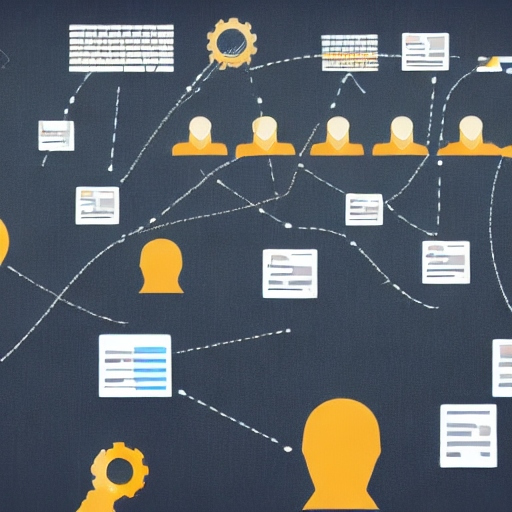It’s not as simple as it might seem on the surface to design and execute machine learning solutions in technology.
From entry-level positions to executive positions, machine learning is transforming a variety of industries, including employment and job markets.
This sophisticated tool transforms how we define and carry out jobs by enabling automated, intelligent decision-making, streamlining work processes. Our professional landscape has been significantly and widely affected by machine learning.
Understanding the Fundamentals of Machine Learning
Artificial intelligence (AI) systems can make judgements, learn from data, and evolve over time thanks to machine learning (ML), a type of AI. In order to make the system smarter with each data exchange, algorithms that identify trends and produce insights are essential.
Three categories can be used to classify ML:
Supervised Learning: It is the process of teaching the system with data that has already been labelled with the correct answer. The algorithm then applies this expertise to forecast outcomes for new previously unknown data.
Unsupervised Learning: The system receives unlabeled data in Unsupervised Learning. It discovers patterns and relationships on its own. This procedure aids in the discovery of hidden insights.
Reinforcement Learning: Similar to how a toddler learns to play a video game, an agent learns to make decisions by completing actions and obtaining rewards or penalties.
ML is important to our current technological ecosystem. Its applications are numerous and diverse, ranging from healthcare and finance to e-commerce and beyond.
One such use was discovered in a study where we looked at more than a million git commits. Based on developers’ commit messages, we used AI to infer their views and moods.
A major factor in ML’s rapid adoption has been its capacity to absorb and learn from enormous amounts of data, making it a key component of our increasingly data-driven society. In the parts that follow, we’ll go into more detail about how it affects job markets.
How Machine Learning Is Affecting Job Markets Right Now
In the workforce, machine learning (ML) is revolutionizing a variety of occupations and introducing new ones.
Jobs that directly use ML are increasing in number. The development and application of ML models to address challenging business problems is the responsibility of data scientists and ML engineers, who are in high demand. From the healthcare and financial sectors to e-commerce and marketing, these experts are essential.
Due to the increased demand for ML knowledge, there is an increase in jobs in this field. More regularly, job boards include positions like “ML Specialist,” “ML Architect,” and “AI Product Manager.” To create and oversee ML systems, these professions require a solid understanding of ML.
Let’s examine some case studies to better comprehend this influence. ML is used extensively by tech behemoths like Google and Amazon. Services like Google Search and Google Photos are powered by Google’s machine learning algorithms. In the meantime, Amazon employs machine learning to improve its recommendation systems, enhancing customer experience.
JPMorgan Chase uses machine learning (ML) outside of the tech industry to identify fraudulent transactions. Businesses like Zebra Medical Vision employ machine learning (ML) to detect diseases in the healthcare industry.
In essence, ML is already altering the employment environment by creating new career routes and advancing those that already exist. This trend is probably going to continue—possibly even accelerate—as the AI era progresses.
The Need for Upskilling and Reskilling
Professionals must maintain their skills in an era of continuous technological innovation. Upskilling or reskilling for ML-oriented positions is becoming necessary as ML’s influence grows. Professionals may protect their employability and put themselves in a position for interesting new opportunities by developing their ML abilities.
Upskilling is the process of acquiring new skills in order to transition into a new role or industry, whereas reskilling is the process of learning additional abilities in order to flourish in one’s existing role. Given the increase in demand for ML skills, both are essential in today’s work market.
For learning ML, there are several materials available. Online degree programs in data science and AI are offered by many major universities. Rich instructional content is being published by OpenAI and other organizations for self-learners.
Exploratory programming is a practical method for learning ML concepts. With this method, one learns by doing while writing code, not to create a finished product but rather to better comprehend an issue.
Professionals may adapt to the shifting employment market by embracing the upskilling and reskilling necessity, transforming the ML wave from an imminent threat into an empowering opportunity.
The Dual Impact of ML: Job Creation and Job Displacement
In the job market, machine learning (ML) has a double-edged sword effect. On the one hand, it can result in employment displacement, while on the other, new roles and fields are anticipated to be created.
As ML automates everyday operations, job displacement may occur. Data input, simple customer service, and straightforward manufacturing operations are examples of jobs that might be automated and result in employment losses. The issue of technological unemployment is one that needs to be taken seriously.
In essence, the ML-enabled future job market is likely to be a landscape of altered positions, where new occupations coexist with enhanced traditional ones and reskilling becomes a constant. We have both a difficulty and an opportunity in how we handle this transformation.
Conclusion
Our world is changing due to machine learning (ML), which is bringing with it both opportunities and difficulties. Humans must advance, concentrating on tasks that oversee and comprehend machine learning in a work market that is ML-centric.
In order to adapt to this AI-enhanced future, ongoing learning and skill development must be prioritized. ML indicates job transition, not job elimination, keep that in mind. We must adhere to the maxim “keep learning” as we move into this dynamic, ML-driven era since knowledge and adaptability are the keys to success.








